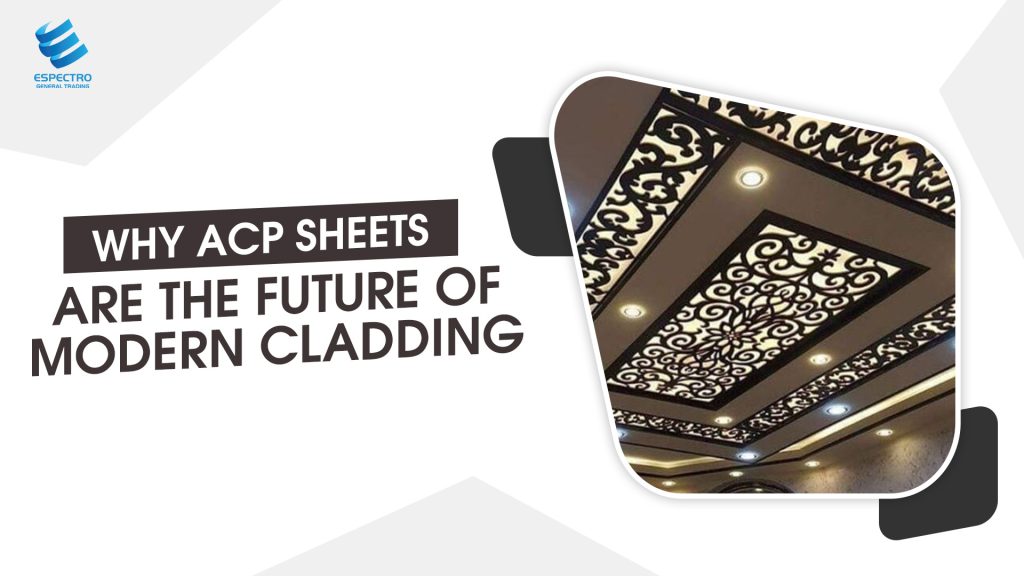Introduction
Building facades are essential to any structure’s overall look and functionality. In modern construction, aluminium works in many innovative ways. One of the best applications?
It is in the ACP sheets. These panels combine lightweight durability with a sleek, modern finish, making them ideal for commercial and residential facades.
In this blog, we’ll discuss how ACP sheets are becoming the top choice for developers and architects.
Features of ACP Sheets
The ACP sheets are made by layering polyethylene and aluminum. They have different qualities of both materials. The following are some of the best features of ACP sheets. In combination, they prove to be the future of wall cladding. It is because they possess amazing features; some are mentioned below.
- Durability
ACP sheets are incredibly durable and withstand harsh weather conditions, corrosion, and UV rays. They do not fade or rust over time, making them a long-lasting option for building facades.
- Lightweight
ACP sheets are lightweight, which makes them easy to handle. They are also cost-effective compared to other heavy building materials.
- Aesthetics
ACP sheets are available in various textures, colors, and finishes, making them versatile options for building facades. They can also be used to create attractive and unique designs that enhance the overall look of the building.
- Sustainability and Eco-Friendliness
Sustainability is no longer a trend; it’s a necessity. ACP sheets, particularly the aluminum layers, are recyclable. You can reuse them without losing their quality. Some advanced ACP manufacturers use green manufacturing processes to reduce their carbon footprints.
Hence, choosing recyclable ACP materials for aluminum wall cladding allows you to work for sustainable construction without compromising functionality or design.
- Low Maintenance, High Return
ACP wall cladding requires less maintenance than natural stone, brick, or wood. Regular cleaning with water and mild soap is enough to keep your ACP panels looking brand new. You do not need to repaint, seal, or polish them now and then.
Its low maintenance makes it perfect for commercial buildings where visual appeal is crucial but operational costs must be minimized.
Where is ACP Cladding Used?
Let’s move on to the application of ACP. The use of ACP panels is not only restricted to commercial high-rises. Here are some common and growing uses:
- Exterior facades for office buildings, hospitals, malls, airports, and hotels
- Residential elevation designs for a modern look
- False ceilings, Interior partitions, and decorative walls
- Signage boards, Canopies, and column coverings
- Corporate identity designs (branding through exterior looks)
As the architectural world moves toward prefabricated and modular designs, ACP cladding plays a significant role in ensuring that buildings look elegant without requiring heavy investment.
Conclusion
In conclusion, aluminum works are becoming the future of building facades. Particularly, ACP sheets because of their amazing features like durability, lightweight, aesthetics, fire resistance, low maintenance, and energy efficiency. With technological advancements, you can get ACP sheets in various designs and finishes from one of the best manufacturers, Espectro General Trading.
As more architects and builders realize the advantages of ACP sheets, they are expected to be used more widely in building facades in the future.
FAQs
Q1) What is ACP in cladding?
Aluminium composite panels (ACP) – An aluminium composite panel (ACP) combines two thin aluminium sheets bonded to a polymer core.
Q2) Why choose ACP?
ACP sheets have a non-porous surface that prevents dirt and water accumulation. Hence, they need minimal upkeep and maintenance.
Q3) Why is cladding important?
Cladding is applying one material over another to make a skin or layer. In construction, cladding offers a degree of thermal insulation and weather resistance and improves the appearance of buildings.

